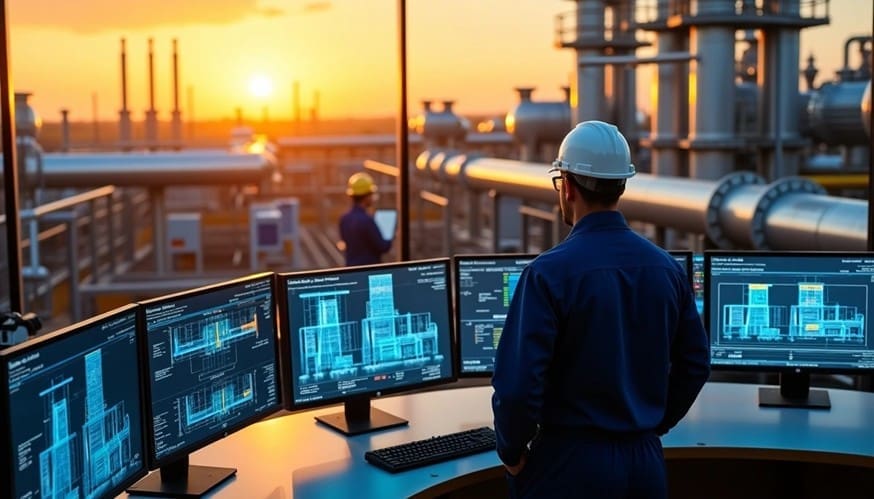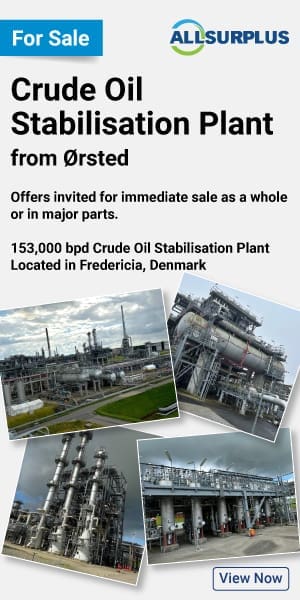Digital twins are revolutionizing the energy sector’s oil and gas operations. The global market could reach $154 billion by 2030. These virtual replicas of physical assets have become vital tools for forward-thinking energy companies to improve their operational efficiency and sustainability.
The value of digital twin technology in oil and gas comes from remarkable results. Companies that implement these advanced systems see equipment downtime drop by 20% and maintenance costs decrease by 25%. Digital twin applications in the oil and gas industry go beyond basic operations. They help manage reservoirs better by improving oil recovery rates 5-10% and reducing water production 10-20%. Major energy corporations have started using these solutions for remote monitoring and predictive maintenance. This creates safer working environments and increases profitability at the same time. In this piece, we’ll look at how leading energy companies achieve measurable results with digital twins and optimize their operations for a more efficient future.
Predictive Maintenance in Offshore and Onshore Assets
Digital twin technology has revolutionized predictive maintenance in oil and gas operations. This technology has changed how energy companies take care of their vital infrastructure. Companies now use AI with immediate sensor data to spot equipment failures before they happen, instead of fixing problems after breakdowns.
The numbers tell a compelling story. Oil producers lose about $500,000 in production for each hour of downtime. Upstream companies face average annual losses of $38 million due to unexpected shutdowns.
Digital twins act as virtual copies of physical equipment to predict problems early. These systems watch important metrics like temperature, pressure, vibration, and fluid levels around the clock. They catch subtle warning signs that humans might miss. Smart algorithms look at this data and spot patterns that show when equipment might fail.
The benefits are clear. Companies that use these systems see 20% less equipment downtime and 15% better equipment performance. Maintenance costs drop by 25% because repairs are better planned and fewer emergencies pop up.
Shell’s success story proves how well this works. Their AI system watches over 10,000 pieces of critical equipment – pumps, compressors, and valves – and analyzes more than 3 million data streams as they happen. This complete system helps Shell cut unplanned downtime by 35% and reduce maintenance costs by 20%. The result? About $2 billion saved every year.
Offshore projects see big gains too. North Sea operations using digital twin maintenance saved more than 2 million euros on assets with 10,000-ton topsides. Maintenance usually eats up 20-40% of operating costs in energy facilities. These savings make a real difference to the bottom line.
Reservoir and Drilling Optimization with Digital Twins
Digital twin technology helps major energy companies get remarkable results in reservoir and drilling optimization. These virtual replicas give deep insights into subsurface conditions and boost production efficiency and resource recovery rates.
Chevron uses digital twins in reservoir management and drilling operations. They create virtual copies of physical assets that help monitor operations live and make better decisions. This method has boosted resource extraction through better visualization and analysis of production scenarios.
ExxonMobil has added digital twin technology to copy refinery processes and optimize production schedules. TotalEnergies uses these virtual models to copy and improve drilling processes, which ended up cutting operational costs.
Digital twins combine IoT sensors with artificial intelligence. They use connectivity and smart analytics to provide useful viewpoints. These twins calculate torque, drag, and hydraulics during drilling operations. They compare calculated values with sensor readings to give complete insights into wellbore conditions.
Digital twins are a great way to get insights into complex subsurface conditions for reservoir management. Reservoir parameters like porosity, permeability, and fluid saturation affect hydrocarbon recovery directly. Virtual replicas help companies optimize their production methods. Machine learning techniques combined with digital twins showed exceptional accuracy in predicting oil recovery factors. Some models reached R² values of 0.99.
The WellsX ECO digital system uses dynamic digital twins. It has shown substantial benefits by reducing wellbore cleanout and instability problems. This technology cuts well construction time and makes drilling practices better.
Digital twins of subsurface environments help energy companies predict reservoir conditions accurately. Companies can find the best well placements and develop extraction strategies that maximize yield. These applications show where reservoir management is heading – toward analytical insights that lead to better recovery and operational efficiency.
Asset Performance and Safety Monitoring at Scale
Oil and gas industry leaders have deployed digital twins to monitor asset performance and safety parameters at scale. These virtual replicas analyze sensor data to predict equipment wear and tear. This analysis helps prevent failures and optimize maintenance schedules.
Digital twins offer significant safety benefits. Companies can identify risks by simulating dangerous scenarios without putting workers in harm’s way. Digital twins of gas pipelines simulate pressure variations to detect weak points that could cause leaks. This technology has cut safety incidents by 20% and made incident response 30% faster.
The financial rewards stand out too. North Sea offshore projects saved over 2 million euros by using IoT and digital twin technology on assets with 10,000-ton topsides. Digital twins throughout the refining supply chain have optimized processes, energy use, and control systems.
Major companies report concrete results. BP’s digital twin solutions yielded 30,000 extra barrels of oil in just one year. Petrobras rolled out this technology in 11 refineries. The company saved $154 million through near-up-to-the-minute assessment and adjustment of operating parameters. Eni creates virtual copies of wells in tough operational situations to test decisions safely.
Digital twins revolutionize pipeline integrity management through virtual inspections and simulations that spot potential leak or rupture zones. Operators can now see pipeline integrity in real time and focus on high-risk assets first.
These virtual models address common industry problems like unexpected shutdowns, hard-to-reach data, and manual inspection scheduling. Digital twins create a unified source of truth by centralizing asset information. This centralization leads to better decisions and more proactive management approaches.
Conclusion
Digital twins have changed the oil and gas industry with clear results in major energy companies. This piece shows how these virtual replicas bring big benefits in three key areas. Shell’s implementation saves $2 billion each year by reducing equipment downtime by 20% and maintenance costs by 25%. Companies like Chevron and ExxonMobil use digital twins to make smarter decisions about resource extraction and boost production efficiency. BP’s safety monitoring systems have cut safety incidents by 20% and improved response time by 30%, leading to 30,000 more barrels in just one year.
The numbers tell a compelling story. Companies save over 2 million euros on offshore assets, while Petrobras refineries report $154 million in savings. These results prove that digital twin technology delivers real returns on investment in operations of all sizes.
Digital twins create safer workplaces and boost profits – a rare combination in industrial settings. Companies that wait to adopt these solutions risk losing ground to competitors who already enjoy these benefits. The market’s expected growth to $154 billion by 2030 shows that digital twins will become standard practice. Smart energy companies will keep adding these virtual replicas to their operations, which will lead to better efficiency, sustainability, and profits.





